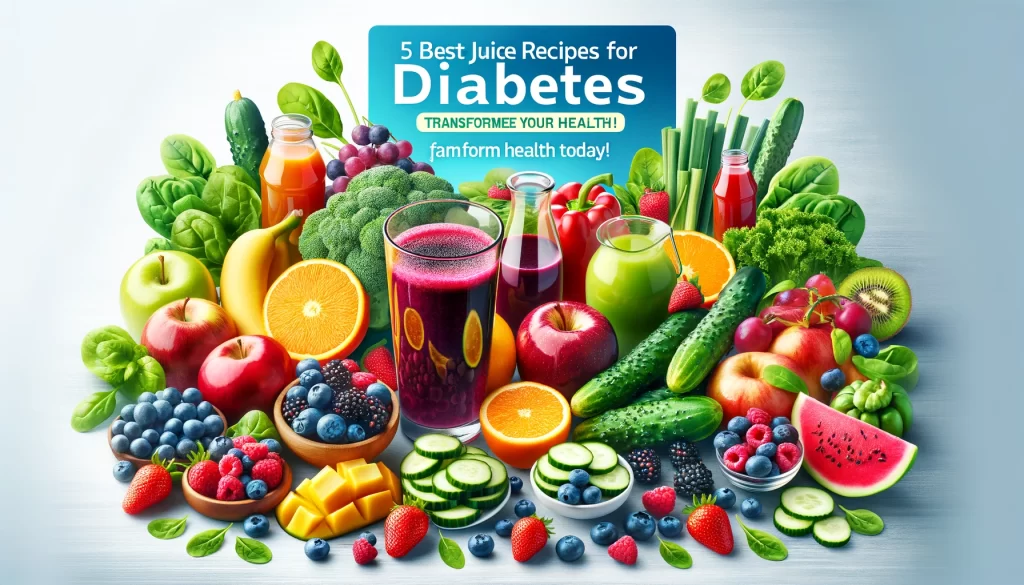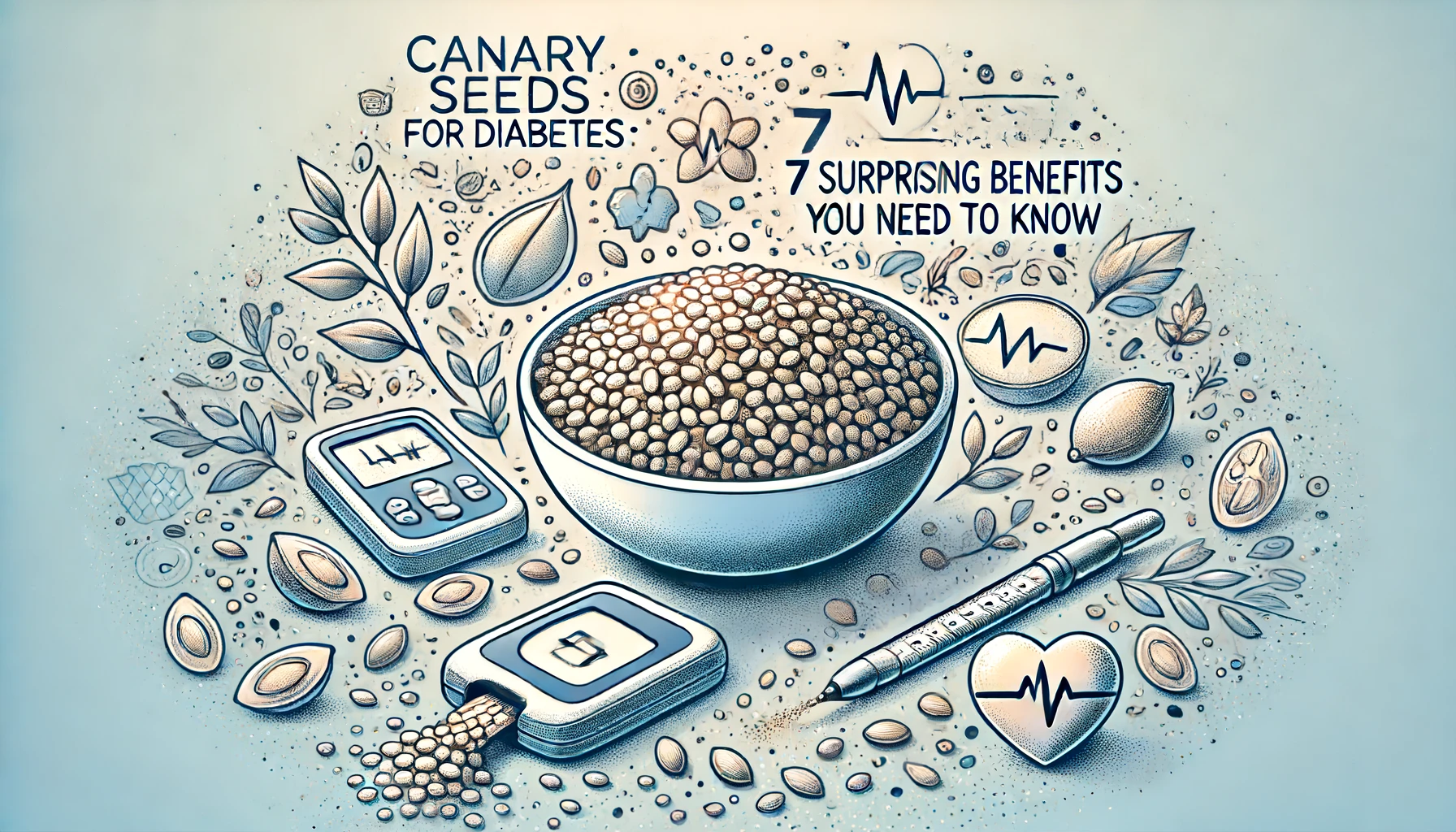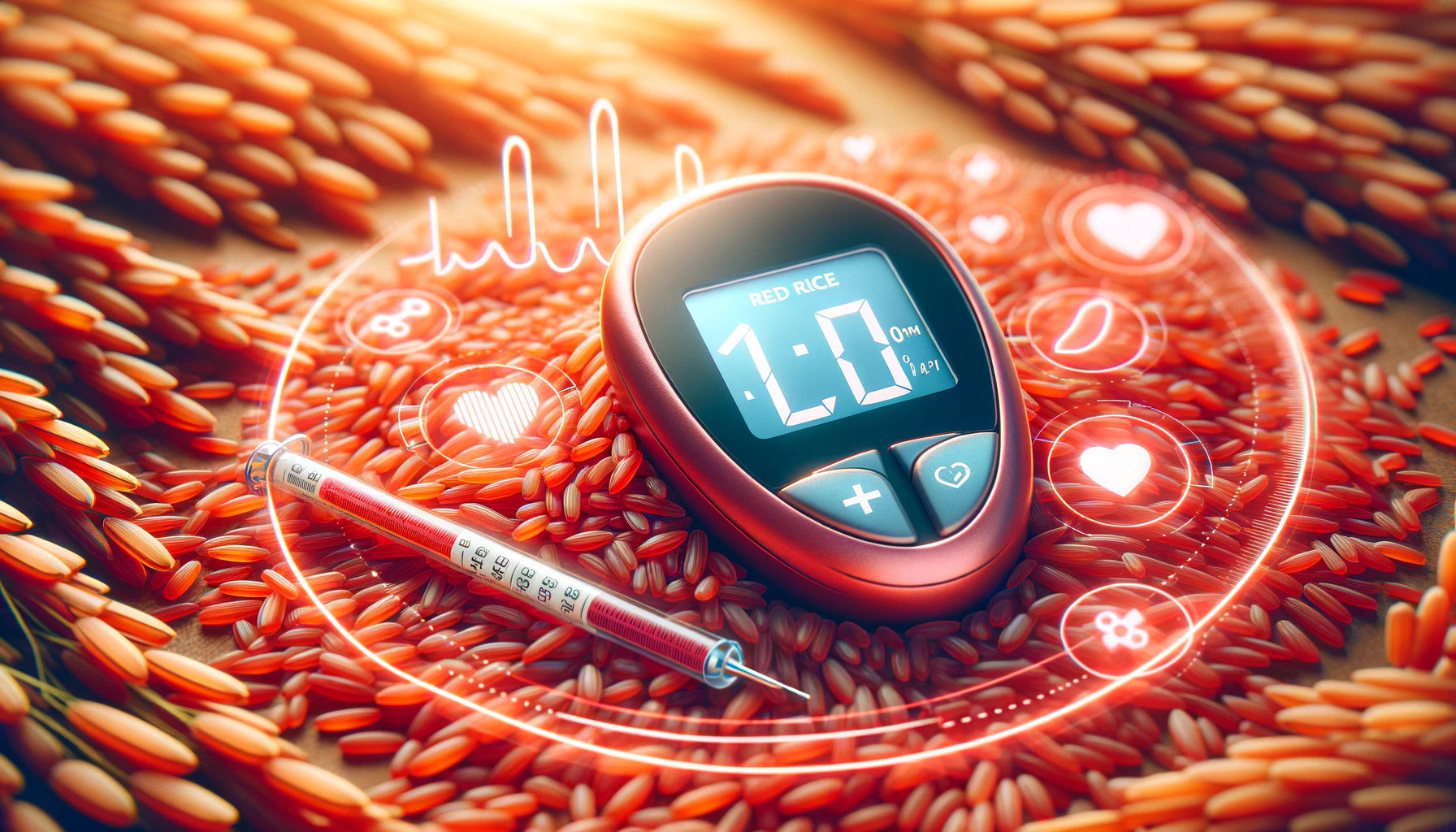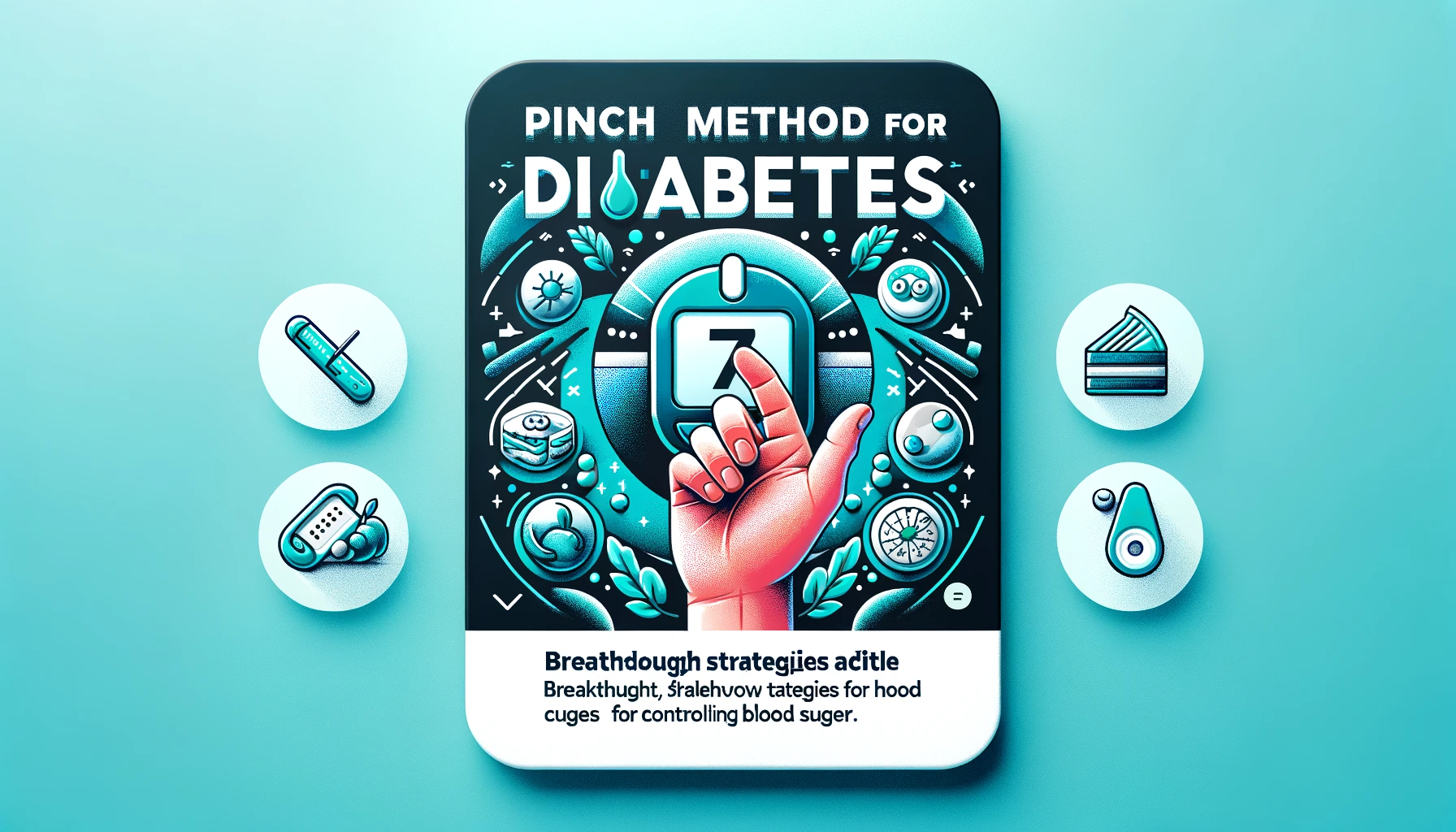Best Juice Recipes for Diabetes
Living with diabetes doesn’t mean you have to miss out on delicious and refreshing beverages. Juicing can be a wonderful way to incorporate essential vitamins, minerals, and antioxidants into your diet while managing your blood sugar levels.
In this comprehensive guide, we’ll explore five of the best juice recipes for diabetes, designed to help you transform your health today. Each recipe is crafted to maximize nutritional benefits and support overall well-being.
Contents
Understanding Diabetes and the Role of Diet
Before diving into the recipes, it’s important to understand how diabetes affects your body and the role diet plays in managing this condition. Diabetes is a chronic condition that occurs when the body either doesn’t produce enough insulin or can’t effectively use the insulin it produces. Insulin is a hormone that helps regulate blood sugar levels. Without proper insulin function, blood sugar levels can become dangerously high.
Diet plays a crucial role in managing diabetes. Consuming foods and drinks with a low glycemic index (GI) can help maintain stable blood sugar levels. Juices, when made with the right ingredients, can be a great addition to a diabetic diet. They provide hydration, and essential nutrients, and can even help in reducing inflammation and improving overall health.
Benefits of Juicing for Diabetes
- Nutrient-Dense: Fresh juices are packed with vitamins, minerals, and antioxidants that are essential for overall health.
- Hydration: Juices help keep you hydrated, which is important for all bodily functions.
- Easy Digestion: Juices are easier to digest than whole fruits and vegetables, making nutrients more readily available to the body.
- Controlled Blood Sugar Levels: When made with low GI ingredients, juices can help in maintaining stable blood sugar levels.
- Weight Management: Fresh juices can be a part of a weight management plan, which is crucial for diabetes management.
Top 5 Juice Recipes for Diabetes
Green Power Juice
Ingredients:
- 1 cucumber
- 2 celery stalks
- 1 green apple
- 1 cup spinach
- 1/2 lemon
- 1-inch piece of ginger
- 1 cup water
Instructions:
- Wash all the ingredients thoroughly.
- Cut the cucumber, celery, and green apple into smaller pieces.
- Add all the ingredients to a blender along with the water.
- Blend until smooth.
- Strain the juice using a fine mesh sieve or cheesecloth.
- Serve immediately.
Benefits: This green power juice is rich in antioxidants and anti-inflammatory compounds. Cucumbers and celery are low in calories and have a high water content, which helps with hydration. Spinach is packed with iron and magnesium, and ginger has natural anti-inflammatory properties that can help with digestion.
Berry Delight Juice
Ingredients:
- 1 cup blueberries
- 1 cup strawberries
- 1 cup raspberries
- 1 cup almond milk (unsweetened)
- 1 tablespoon chia seeds
Instructions:
- Wash the berries thoroughly.
- Add all the berries to a blender along with the almond milk and chia seeds.
- Blend until smooth.
- Serve immediately.
Benefits: Berries are known for their low glycemic index and high antioxidant content. Blueberries, strawberries, and raspberries are all excellent sources of vitamins C and K, as well as fiber. Almond milk is a great dairy-free alternative that is low in carbs and calories, and chia seeds add a boost of omega-3 fatty acids and fiber.
ALSO READ: Sugar Defender Reviews – [UPDATED 2024] Does It Really Work?

Carrot-Apple-Ginger Juice
Ingredients:
- 2 large carrots
- 1 apple (preferably green)
- 1-inch piece of ginger
- 1/2 lemon
- 1 cup water
Instructions:
- Wash and peel the carrots.
- Cut the carrots and apple into smaller pieces.
- Add the carrots, apple, ginger, lemon juice, and water to a blender.
- Blend until smooth.
- Strain the juice using a fine mesh sieve or cheesecloth.
- Serve immediately.
Benefits: Carrots are rich in beta-carotene, fiber, and antioxidants. Apples, especially green ones, have a lower glycemic index and are a good source of fiber and vitamin C. Ginger adds a zesty flavor and has anti-inflammatory properties. This juice is great for boosting the immune system and maintaining healthy skin.
Tomato-Cucumber Juice
Ingredients:
- 2 large tomatoes
- 1 cucumber
- 1/2 red bell pepper
- 1/2 lemon
- A handful of fresh basil
- 1 cup water
Instructions:
- Wash all the ingredients thoroughly.
- Cut the tomatoes, cucumber, and bell pepper into smaller pieces.
- Add all the ingredients to a blender along with the water.
- Blend until smooth.
- Strain the juice using a fine mesh sieve or cheesecloth.
- Serve immediately.
Benefits: Tomatoes are rich in lycopene, an antioxidant that is beneficial for heart health. Cucumbers are hydrating and low in calories. Red bell peppers add a sweet flavor and are a good source of vitamins A and C. Basil adds a refreshing taste and has anti-inflammatory properties. This juice is perfect for a refreshing and nutritious drink.
Spinach-Pineapple Juice
Ingredients:
- 1 cup spinach
- 1 cup pineapple chunks
- 1/2 cucumber
- 1/2 lemon
- 1 cup water
Instructions:
- Wash the spinach and cucumber thoroughly.
- Cut the cucumber and pineapple into smaller pieces.
- Add all the ingredients to a blender along with the water.
- Blend until smooth.
- Strain the juice using a fine mesh sieve or cheesecloth.
- Serve immediately.
Benefits: Spinach is a powerhouse of nutrients, including iron, magnesium, and vitamins A and K. Pineapple adds a sweet and tangy flavor while providing vitamin C and bromelain, an enzyme that aids digestion. This juice is refreshing and packed with nutrients that support overall health.
Tips for Juicing with Diabetes
- Choose Low GI Ingredients: Focus on fruits and vegetables that have a low glycemic index to prevent spikes in blood sugar levels.
- Limit Fruit Portions: Use more vegetables than fruits in your juices to keep the sugar content low.
- Incorporate Fiber: Try to include the pulp in your juices or add a source of fiber like chia seeds to help slow down the absorption of sugar.
- Monitor Portions: Drink juices in moderation and be mindful of portion sizes to avoid consuming too many carbohydrates at once.
- Stay Hydrated: Ensure you drink plenty of water throughout the day to stay hydrated, especially when consuming juices.
Conclusion – Best Juice Recipes for Diabetes

Best Juice Recipes for Diabetes
Juicing can be a delightful and nutritious way to manage diabetes and improve overall health. By choosing the right ingredients and following these recipes, you can enjoy delicious juices that support stable blood sugar levels and provide a wealth of essential nutrients. Remember to monitor your blood sugar levels regularly and consult with your healthcare provider before making significant changes to your diet. Enjoy these juice recipes as part of a balanced diet, and transform your health today!
ALSO READ: Sugar Defender Scam – (CAUTION 2024) Fraud Risks to Avoid or Safe Ingredients That Work?
FAQ: Juice Recipes for Diabetes
-
Can people with diabetes safely drink juice?
Yes, people with diabetes can safely drink juice, but it is important to choose juices made from low glycemic index (GI) fruits and vegetables. Limiting portion sizes and monitoring blood sugar levels are also crucial to avoid spikes in blood sugar.
-
What are the best fruits and vegetables for juicing with diabetes?
The best fruits and vegetables for juicing with diabetes include cucumbers, celery, spinach, berries (such as blueberries, strawberries, and raspberries), green apples, tomatoes, and carrots. These options have lower GI values and provide essential nutrients without causing significant blood sugar spikes.
-
How often should I drink these juices?
It is recommended to drink these juices in moderation, perhaps once a day or a few times a week. Consuming a balanced diet with a variety of nutrients is key, so juices should complement your overall dietary plan rather than replace whole meals.
-
Should I add sweeteners to my juice?
It is best to avoid adding sweeteners to your juice, especially refined sugars or artificial sweeteners, as they can cause blood sugar levels to spike. Instead, rely on the natural sweetness of low-GI fruits and vegetables.
-
Can I prepare these juices in advance?
Freshly made juice is best consumed immediately to retain its nutritional value. However, if you need to prepare juice in advance, store it in an airtight container in the refrigerator and consume it within 24 hours to minimize nutrient loss.
-
How can I increase the fiber content of my juices?
-
Are there any potential risks associated with juicing for diabetes?
While juicing can provide many health benefits, it is important to be mindful of portion sizes and ingredient choices. Consuming too much juice, especially from high-GI fruits, can lead to blood sugar spikes. Always monitor your blood sugar levels and consult with your healthcare provider before making significant changes to your diet.
-
What is the best time of day to drink juice for optimal blood sugar control?
There is no specific best time to drink juice for blood sugar control, but some people find that consuming juice in the morning or as a mid-afternoon snack works well for them. It’s important to monitor how your body responds and adjust accordingly.
-
Can I use these juice recipes as meal replacements?
While these juice recipes are nutrient-dense, they should not be used as complete meal replacements. They can be a part of a balanced diet but should be complemented with whole foods that provide protein, healthy fats, and additional fiber.
-
What should I do if I experience a blood sugar spike after drinking juice?
If you experience a blood sugar spike after drinking juice, it is important to monitor your blood sugar levels closely. Consider adjusting the portion size or choosing lower GI ingredients. Consulting with your healthcare provider or a registered dietitian can also help you make necessary adjustments to your diet.













